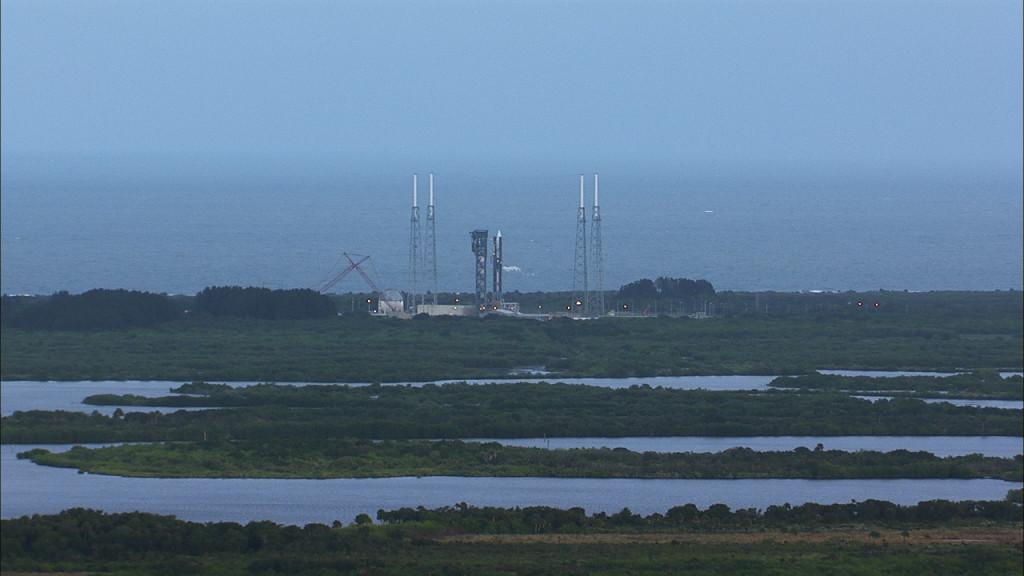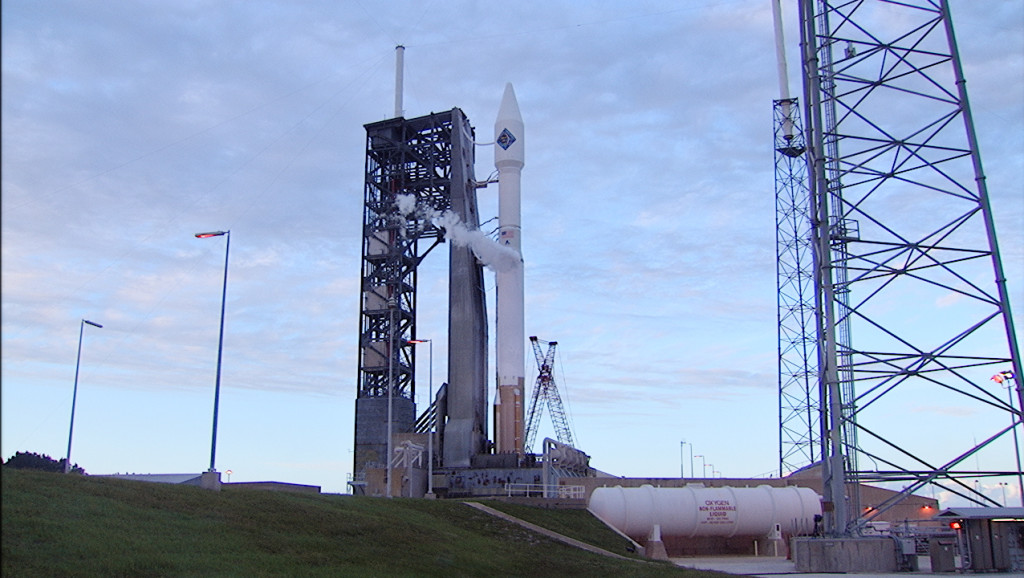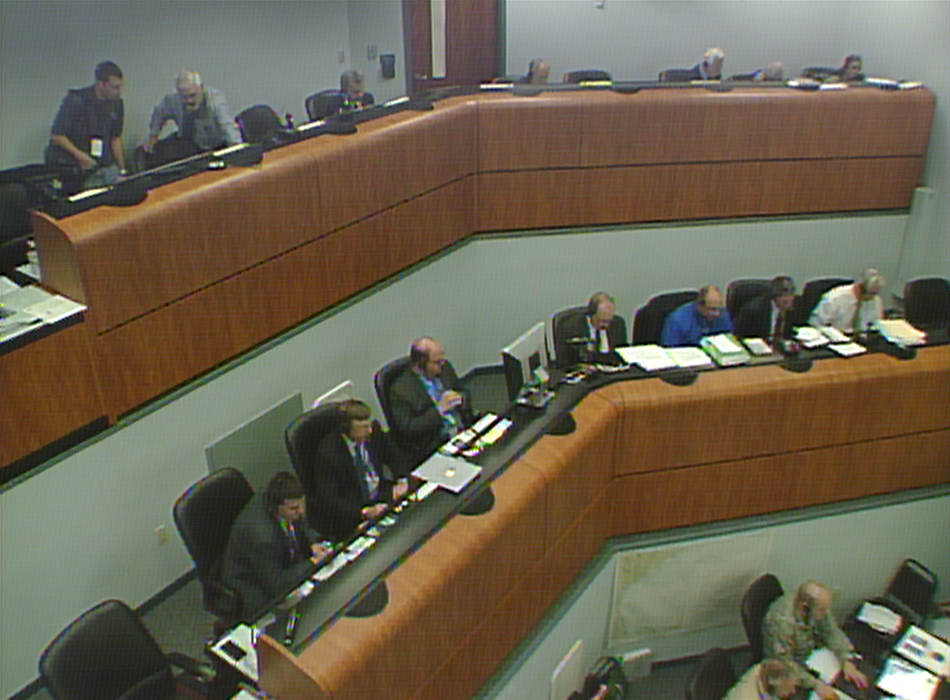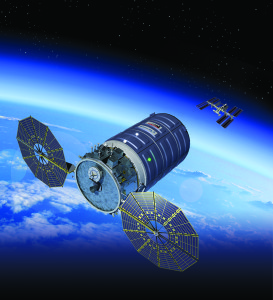The launch team called a hold and the timers have reset to T-4 minutes and holding.
T-4 Minutes and Counting
Terminal phase of the countdown has begun for the United Launch Alliance Atlas V rocket and Orbital ATK’s Cygnus spacecraft.
Go for Launch!
13 Minutes to Launch
With no technical issues and a green weather board, the launch team is moving on schedule to a 5:33 p.m. EST liftoff.
Cygnus ‘Go’ for Launch
Cygnus Switching to Internal Power
Meteorologists Watching Cape Winds
The weather board is green right now but forecasters are watching out for gusting winds so the forecast conditions remain 40 percent chance of ‘go’ at launch time, Clay Finn, launch weather officer for the Air Force’s 45th Weather Squadron, advised the launch teams. The countdown is moving toward a 5:33 p.m. EST liftoff.
Countdown Enters Planned Hold
With the countdown at T-4 minutes, the clock has paused for 30 minutes. The weather briefing is coming up in a few minutes. Forecast remains 40 percent ‘go.’
First Flight of Enhanced Cygnus
 The Cygnus flying today is a larger version than previous versions Orbital ATK built. This one carries 25 percent more mass and is more than 20 feet long. It is taking 7,383 pounds of supplies such as food and clothing, along with scientific equipment and other gear for different aspects of spaceflight to the International Space Station during this mission. Here’s a look at what is to take place as the uncrewed Cygnus flies itself to the station where the astronauts there will grab it and connect it to the orbiting laboratory.
The Cygnus flying today is a larger version than previous versions Orbital ATK built. This one carries 25 percent more mass and is more than 20 feet long. It is taking 7,383 pounds of supplies such as food and clothing, along with scientific equipment and other gear for different aspects of spaceflight to the International Space Station during this mission. Here’s a look at what is to take place as the uncrewed Cygnus flies itself to the station where the astronauts there will grab it and connect it to the orbiting laboratory.
The Power of Research, Cubed
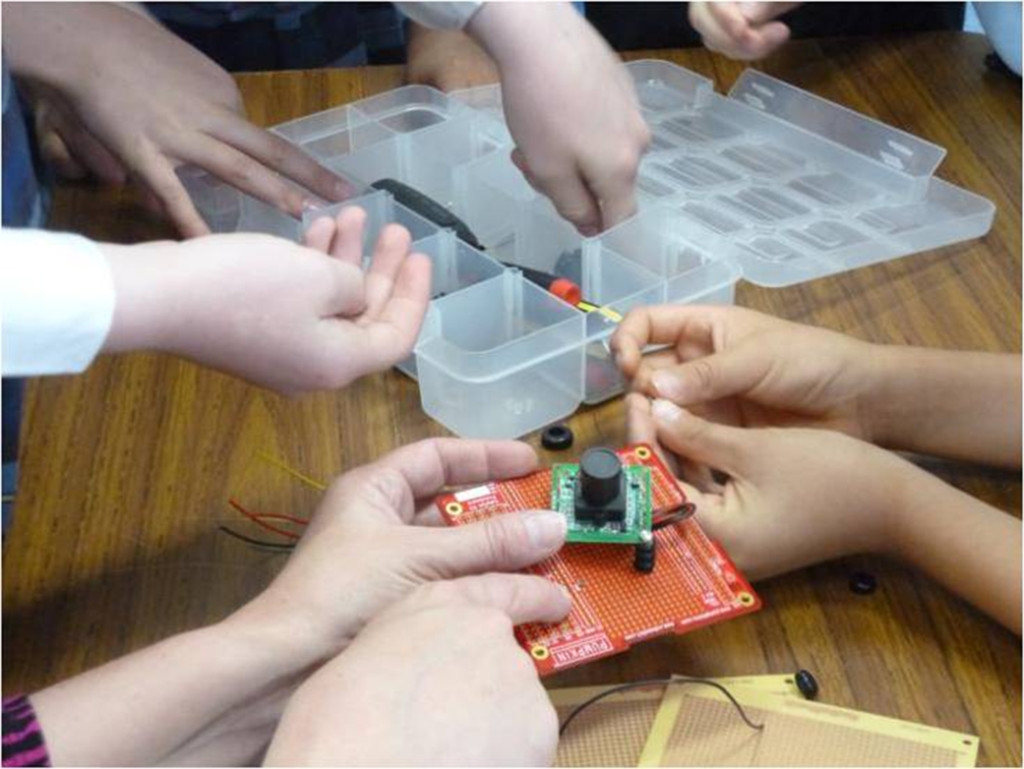 The payloads inside Cygnus include several CubeSats, which are miniature spacecraft that fill a standardized frame about 4-inches by 4-inches by 4-inches. The satellites are developed at a much lower cost than full-size spacecraft and allow innovations on several levels along with granting opportunities for practical, hands-on experience for students and others.
The payloads inside Cygnus include several CubeSats, which are miniature spacecraft that fill a standardized frame about 4-inches by 4-inches by 4-inches. The satellites are developed at a much lower cost than full-size spacecraft and allow innovations on several levels along with granting opportunities for practical, hands-on experience for students and others.
Deploying from the space station, the CubeSats will conduct independent, focused missions ranging from technological confirmation to relaying data from space to teams waiting anxiously on Earth. Among those teams is a group of students and teachers from St. Thomas More Cathedral School. With this launch, the group will become the first elementary school to put a CubeSat into orbit. The school worked with NASA’s ELaNa project, part of the agency’s Launch Services Program based here at Kennedy, to build and launch the STMSat-1. Read the details at www.nasa.gov/feature/elana-IX.

